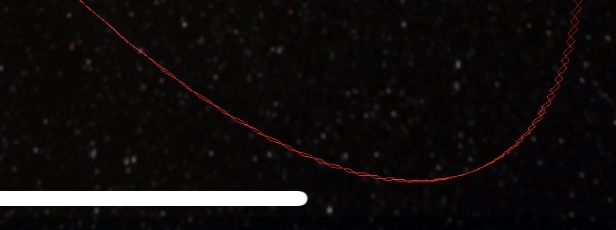Notifications
ALL BUSINESS
COMIDA
DIRECTORIES
ENTERTAINMENT
FINER THINGS
HEALTH
MARKETPLACE
MEMBER's ONLY
MONEY MATTER$
MOTIVATIONAL
NEWS & WEATHER
TECHNOLOGIA
TV NETWORKS
VIDEOS
VOTE USA 2026/2028
INVESTOR RELATIONS
DEV FOR 2025 / 2026
ALL BUSINESS
COMIDA
DIRECTORIES
ENTERTAINMENT
FINER THINGS
HEALTH
MARKETPLACE
MEMBER's ONLY
MONEY MATTER$
MOTIVATIONAL
NEWS & WEATHER
TECHNOLOGIA
TV NETWORKS
VIDEOS
VOTE USA 2026/2028
INVESTOR RELATIONS
DEV FOR 2025 / 2026
About Me
 Latinos Media
Latinos Media Latinos Media provides all types of news feeds on a daily basis to our Members
Posted by - Latinos Media -
on - March 24, 2023 -
Filed in - Technology -
-
469 Views - 0 Comments - 0 Likes - 0 Reviews

I am developing an iOS application using XCode 14.2, and my deployment target is iOS 16.2. I have a list of X,Y, and Z values that I want to draw with Metal using lineSrip. This works, however the line that is drawn is too thin for my purposes. I've read about various strategies on how to thicken the line and I've decided to attempt to draw the same line many iterations with a small amount of noise each time to give the appearance of a thicker line.
I generate 3 random floats each time through the render loop and send them to my vertex shader with a uniform. The issue is that the resulting line seems to be more periodic than random and more iterations does not seem to give the appearance of a thicker line.
How can I draw thicker lines using this strategy? Thank you.
Draw many iterations:
// Draw many iterations
for iteration in 1...1024 {
scene.track?.draw(encoder: commandEncoder,
modelMatrix: accumulatedRotationMatrix,
projectionMatrix: projectionMatrix * viewMatrix,
secondsInEpoch: Float(self.epochTime))
}
Random floats:
var jitter = 1.0 / Float(self.screenSizeX) - 1 / Float(self.screenSizeY) var jitterX = Float.random(in: -jitter...jitter) var jitterY = Float.random(in: -jitter...jitter) var jitterZ = Float.random(in: -jitter...jitter)
Vertex Uniform:
struct VertexUniforms {
var viewProjectionMatrix: float4x4
var modelMatrix: float4x4
var normalMatrix: float3x3
var jitterX: Float
var jitterY: Float
var jitterZ: Float
var iteration: Float
}
Draw primitives call:
encoder.drawPrimitives(type: .lineStrip , vertexStart: 0, vertexCount: vertices.count / 3)
Vertex shader:
// Calculate the jitter for X/Y/Z
//float subFactor = 0.0099;
float subFactor = 0.0105;
float smallFactorX = (subFactor * uniforms.jitterX);
float smallFactorY = (subFactor * uniforms.jitterY);
float smallFactorZ = (subFactor * uniforms.jitterZ);
if (vertexId % 2 == 0) {
vertexOut.position.x += (vertexOut.position.x * smallFactorX);
vertexOut.position.y += (vertexOut.position.y * smallFactorY);
vertexOut.position.z += (vertexOut.position.z * smallFactorZ);
} else {
vertexOut.position.x -= (vertexOut.position.x * smallFactorX);
vertexOut.position.y -= (vertexOut.position.y * smallFactorY);
vertexOut.position.z -= (vertexOut.position.z * smallFactorZ);
}
return vertexOut;